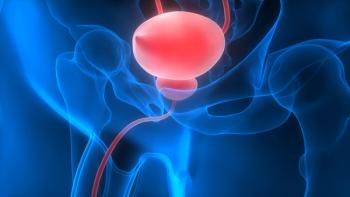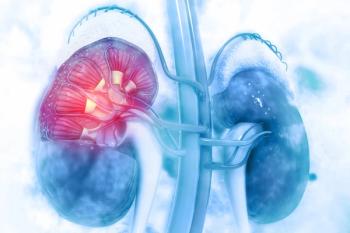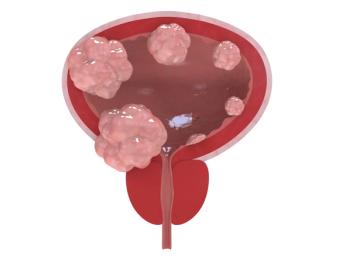
Vorinostat Plus Bevacizumab Had Activity in Previously Treated RCC
Using the HDAC inhibitor vorinostat plus the VEGF inhibitor bevacizumab resulted in clinical activity in patients with clear cell renal cell carcinoma.
Using a combination of the class II histone deacetylase (HDAC) inhibitor vorinostat and the vascular endothelial growth factor (VEGF) inhibitor bevacizumab resulted in clinical activity in patients with clear cell renal cell carcinoma (RCC), according to the results of a phase I/II study
“Our results highlight that the combination of vorinostat and bevacizumab is safe, and further clinical investigation would be warranted to clarify whether this combination has greater efficacy vs bevacizumab alone,” wrote Robert Pili, MD, of Indiana University Simon Cancer Center in Indianapolis, and colleagues.
Pili and colleagues conducted this analysis to evaluate the safety and efficacy of the combination of vorinostat and bevacizumab. Previous research had shown that a pan-HDAC inhibitor may exert antiangiogenic activity by impairing pathways in the tumor and endothelial compartments.
“Combination therapies with agents that target endothelial cells to block angiogenesis and HDAC inhibitors to prevent tumor adaptation to the resulting hypoxia by downregulating angiogenesis-related gene expression represents a rational therapeutic strategy in clear cell RCC,” the researchers noted.
Therefore, in this study, they enrolled 36 patients with clear cell RCC who had up to 2 prior regimens of treatment. Patients were treated with vorinostat 200 mg twice daily for 2 weeks and bevacizumab 15 mg/kg every 3 weeks. The primary endpoints were safety and the proportion of patients with 6 months of progression-free survival. Thirty-three patients were evaluable: 18 had one prior treatment, 13 had two prior treatments, and two were treatment naive.
Overall, six patients had objective responses, including one complete response and five partial responses. Nineteen patients had stable disease, including two patients with confirmed objective response for more than 2 years.
Forty-eight percent of patients in the study were free from progression at 6 months. The median progression-free survival was 5.7 months and the median overall survival was 13.9 months. The two treatment-naive patients experienced no clinical benefit from the drug combination.
According to the researchers, the toxicity profile of the drug combination was acceptable. Two patients enrolled in the study had grade 4 thrombocytopenia and three patients had grade 3 thromboembolic events. During the phase II portion of the study, the most commonly occurring adverse events were fatigue (61%), nausea (48%), pain (48%), anorexia (45%), diarrhea (36%), and elevated creatinine (36%).
“We are also encouraged from the results of a recently reported phase I study with the HDAC inhibitor abexinostat in combination with the VEGF tyrosine kinase inhibitor pazopanib showing 18% response rate in previously treated RCC patients (Aggarwal et al, 2016),” the researchers wrote. “Further analysis of patients responding to epigenetic therapies in the context of VEGF inhibition will identify the subset of clear cell RCC patients who may benefit from this combination therapeutic strategy.”
Newsletter
Stay up to date on recent advances in the multidisciplinary approach to cancer.
















































































